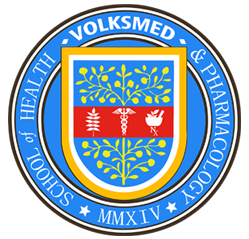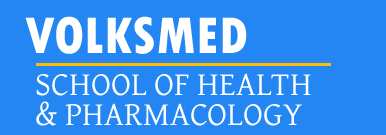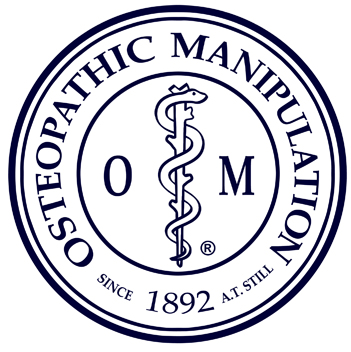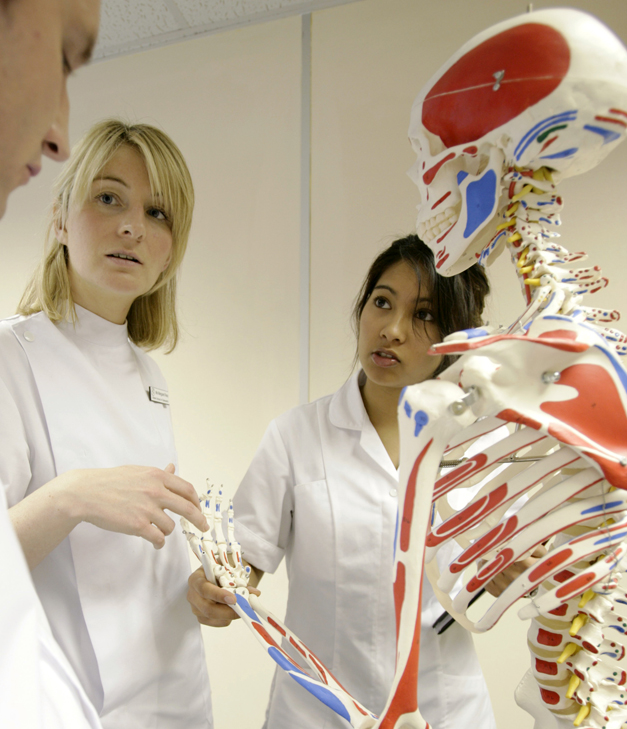

| HOME | COURSES | ALUMNI | RESEARCH | ACADEMICS | ABOUT US |
|
 |
|
| HOME | COURSES | ALUMNI | RESEARCH | ACADEMICS | ABOUT US | |
 Osteopathic Manipulation, OM® Osteopathic Manipulation Approach to Treatment Body Manipulation Technique Lato Sensu Ad Modum Andrew Taylor Still Scientific Study Hours: 500 Hours Clinical Training Hours: 150 Lessons (à 45 min.) |
||||||||
|
||||||||
|
IndicationsThe Journal of the American Osteopathic Association (JAOA) has published findings regarding the benefits of Osteopathic Manipulation for different conditions and injuries.
Manipulative therapies are most commonly used to treat some of the following:
- Chronic knee, shoulder, low back or neck pains
- Asthma and other respiratory/breathing problems
- Sinus disorders and related conditions like pneumonia
- Carpal tunnel syndrome
- Headaches
- PMS or menstrual pains
- Problems with motor control or coordination due to injuries, impact or trauma (such as car accidents, falls or collisions)
- Instability, or problems with motor control and falling due to lack of balance
- Side effects due to medications or drug and alcohol addiction
- Digestive complaints, including constipation or acid reflux
- Hypertension and cardiovascular problems
The early, accurate application of Osteopathic Manipulation can aid the damaged tissues and structures of the joints by:
Promote healthy cellular homeostasis,
Encourage faster tissue repair & recovery,
Reduce musculoskeletal pain & discomfort,
Increasing joint movement by stretching fibrous tissue and affecting the stretch reflex excitability,
Increasing the vascular circulation in and out of the joint,
Improve structural stability and integrity of the intervertebral disc,
Preventing degenerative changes to the articular surfaces,
Inhibiting the build-up of fluid and distension forces upon the tissues and joint,
Aiding the removal of metabolic waste products,
Influencing the sympathetic nervous system activity, thus affecting blood flow, blood pressure, heart rate or respiratory rate.Breathing & Respiratory Functions
A 2014 study published in the Journal of Visualized Experiments found that osteopathic manipulative treatment could be used as an effective adjunctive tool for patients with respiratory conditions, inflammation of the lungs or airways, or illnesses including pneumonia. (Osteopathic Manipulative Treatment as a Useful Adjunctive Tool for Pneumonia)
Specific techniques that are used to address respiratory problems through means like lymph drainage and rib cage mobility include: Rib Raising, Thoracic Pumping, Doming of the Thoracic Diaphragm, and Muscle Energy work. Some of the ways that these osteopathic manoeuvres can help manage these illnesses include increasing lymphatic flow, improving overall respiratory function by lowering inflammation, and boosting immunological defences by targeting anatomical structures involved in the respiratory and immune systems.
Contraindications (non exhaustive list)Joint articulation techniques that involve considerable movements should be avoided, as they may:
Exceed the natural motion barrier
Stress the tissues excessively
Force the tissues to undergo the plastic deformation
| Disclaimer |
Successful Students
Are those who have taken, and passed a:
1. Written Exam
2. Oral Examination
3. Practical Examination
These students receive a "Diploma on Osteopathic Manipulation".
Students who don't meet these requirements, may retake those examinations, which they have not fully meet at a later date, without any extra cost. Never the less, these students will receive a "Certificate of Attendance" to the "Osteopathic Manipulation Course". They may in future, exchange their "Attendance Certificate" for a "Diploma" at a latter date, when they pass the: Written, Oral and Practical Examinations. These examinations are conducted in front of the other tutors and students, in a manner which is both transparent and impartial. Written examinations are verified by a second opinion being that of another tutor from the school, not present in class (to guarantee impartiality). The School has no aim, or benefit in being a stumbling stone to any one, rather, the school wish, is to be a stepping stone for the advancement and progress of each student. In order that each student can be as well prepared professionally has the school can make him, that each student may go out into the world and do the best possible good to others in the professional field of Health Care.Please Note
The Osteopathic Manipulation Course, does not, nor it is intended or qualify you as a "Doctor in Osteopathy".In England Under Section 32(1) of the Osteopaths Act 1993 it is an offence to infer or imply that you are an Osteopath if you have not carried out the relevant training, and the following designations or titles are prohibited to use: "Osteopath, Osteopathic Practitioner, Osteopathic Physician, Osteopathist, Osteotherapist, or any other kind of Osteopath".
Successful Qualified Students after the completion of the Course in Osteopathic Manipulation, when describing themselves, either in written or verbal form, must state that they are trained, certified or qualified in Osteopathic Manipulation Techniques.Example:
Paul Health, LMT®, OM®
Lymphatic Manipulation
Osteopathic Manipulation
Or
Paul Health, LMT®, OM®
Lymphatic Manipulation Therapeutae
Osteopathic Manipulation Therapeutae
DisclaimerGraduates from Volksmed School of Health and Pharmacology having obtained the School Private Diploma of “Osteopathic Manipulation” or similar, should take care not to imply that they hold a general “Osteopathic” qualification in case they do not. The title of “Osteopathic Manipulation” aren't Osteopathic doctors, and aren't registered with the General Osteopathic Council. Thus the following information should be written in every letter and in every individual web page, this is in every page of the Therapeutae webpage. This to avoid at all cost any confusion.
Please Note: Osteopathic Manipulation Therapeutae aren't Osteopathic doctors, and aren't registered with the General Osteopathic Council.
Medicine
Please not Osteopathy is not medicine, nor it is related to the medical trade in any shape or form. Anyone who claims that Osteopathy is medicine. Dr Andrew Taylor Still the founder of Osteopathy clearly stated this.
Concerning Medical Trade Synthetic Pharmaceutical Drugs
Dr Andrew Taylor Still clearly stated that these are not part of Osteopathy.
Concerning the "So-Called" Classical Osteopathy"Classical Osteopathic philosophies, principles, concepts and technical skills, as formulated over a hundred years ago by AT Still and then further interpreted by JM Littlejohn." -in " The Institute of Classical Osteopathy" 2015
Osteopathy is Osteopathy
Either: it is Osteopathy, or its not Osteopathy. There are no such things, as different kinds of Osteopathy. Osteopathy Is One! One Science! One Philosophy! One Concept! One Ideal! One Founder: Dr Andrew Taylor Still, MD, DO
"Osteopathy Science, Philosophy, Principles, Concepts and Technical Practical Clinical Skills, as formulated, presented and explained by its founder. The teachings of the Founder of Osteopathy; Dr Andrew Taylor Still, MD, DO." - in Dr Andrew Taylor Still, MD, DO and Dr Rui Alexandre Gabirro, DHE in "Osteopathy: The Principles and Foundations, The Science of Osteopathy Explained; And Its Usefulness In Clinical Practice", 2023.Clarification on what is Osteopathy
The Books of Dr Andrew Taylor Stiill are the foundation and the corner stones of what Osteopathy is and what it is not.
The following are the 4 Books Written and Published by Dr Andrew Taylor Still, MD, DO
Autobiography of Andrew Taylor Still, 1897
Philosophy of Osteopathy, 1899
Osteopathy Research and Practice, 1902
Osteopathy Research and Practice, 1910
The Following are the Books who faithfully describe the work of Dr Andrew Taylor Still, without innovations.
"Dr A. T. Still in the Living, His concepts and principles of health and disease" by Dr Robert Edison Truhlar, DO, 1950
Original Osteopathic Moves
Taught by Doctor Andrew Taylor Still to Dr. Charles F. Haverlin a pupil and graduate of Doctor A. T. Still
A publication consisting of 10 Lectures, which have been recorded by Dr Frederic W. Collins, MD, AM, Do, Ph.C., and published in 1924.Publication Date: 2020
GGKEY:W18BSCCNZDF
Osteopathy: The Principles and Foundations
The Science of Osteopathy Explained; And Its Usefulness In Clinical Practice. An explanation of the Science of Osteopathy: Its Philosophy, Principles and Concepts. With its Technical and Practical Clinical Skills, as formulated, presented and explained by its founder. The Teachings of Osteopathy as given by Dr Andrew Taylor Still, MD, DO
Osteopathy is Osteopathy
Either: it is Osteopathy, or its not Osteopathy. There are no such things, as different kinds of Osteopathy. Osteopathy Is One! One Science! One Philosophy! One Concept! One Ideal! One Founder: Dr Andrew Taylor Still, MD, DO
GGKEY:03TXDAPSQZA

Image: Copyright Mark Turnbull
“Osteopathy Teaches, and has for its object the keeping and maintaining a complete circuit of the forces of the Motor, Sensory and Sympathetic Nerves, to and from the Brain and all the organs, tissues, blood and other vessels, the bowels and all parts, and the whole of the human system that pertain to nourishment, strength and growth of bone, the skin appendages and soft parts of the body.
Health is the result of the harmonious action of the system when all parts are unirritated by any cause, such as increased or diminished flow of the fluids of the arteries or veins or the nerve force, by partial or complete dislocation of bones, muscles, tissues, membranes or parts of the whole system. The object of Osteopathy is freedom of flow of all electric of other fluids, forces or substances pertaining to life.” - Statement of Dr A.T. Still, DO upon the Diplomas of Osteopathy in 1893.Please note: Volksmed School is not related, nor is affiliated with any other Institution teaching Osteopathic Manipulation, OM® is a registered trademark of the Hospitallers Order of the Good News in the United Kingdom.
|
Contact Us |
||
|
|
Essenia Bahia, Brasil
|
|
|
|
United Kingdom Registered |
San Pedro de la Paz 413000 Concepcion, Chile |
School
of Health & Pharmacology © VOLKSMED ® Est 2014 |
||